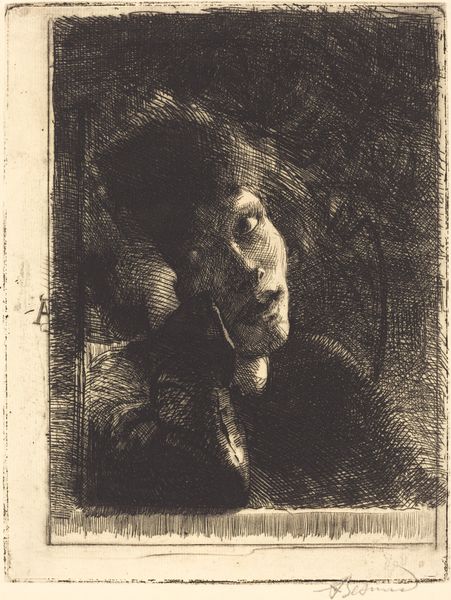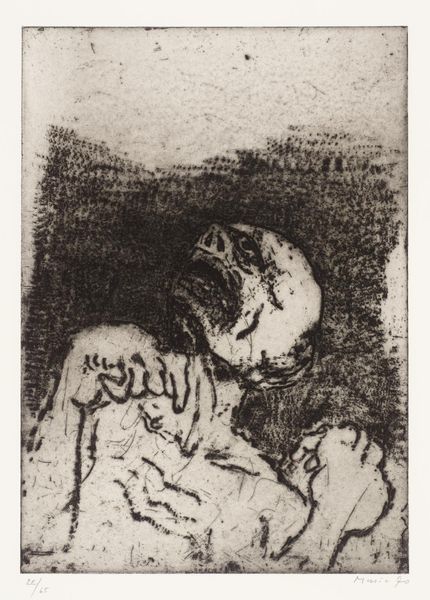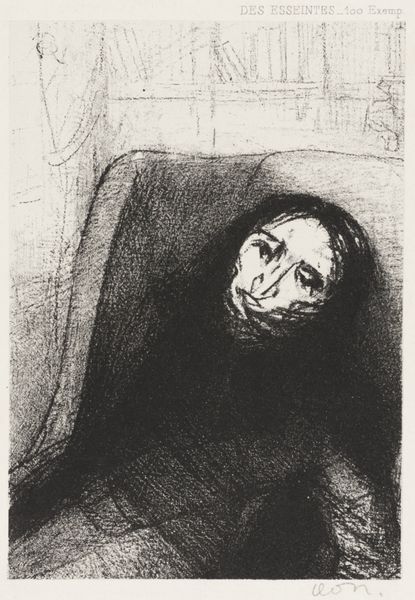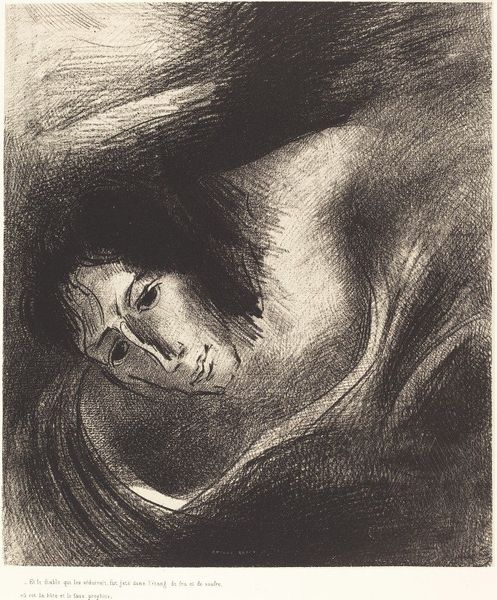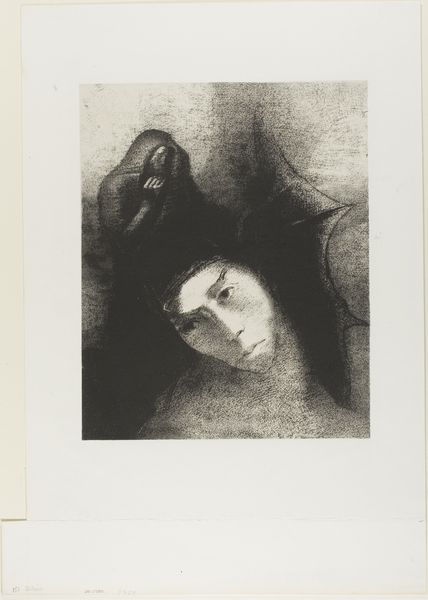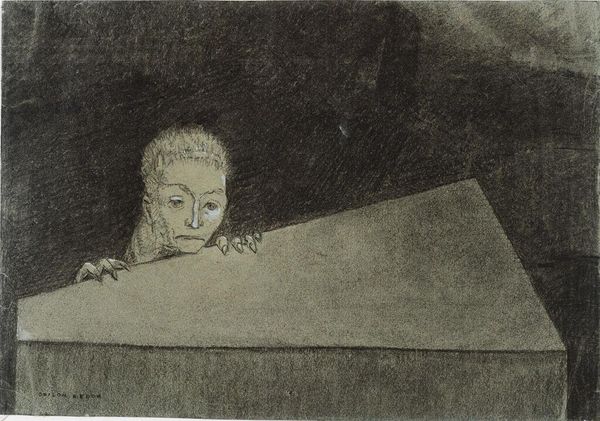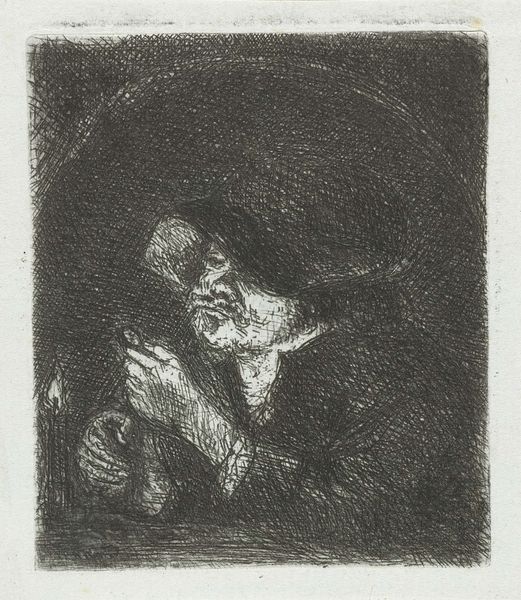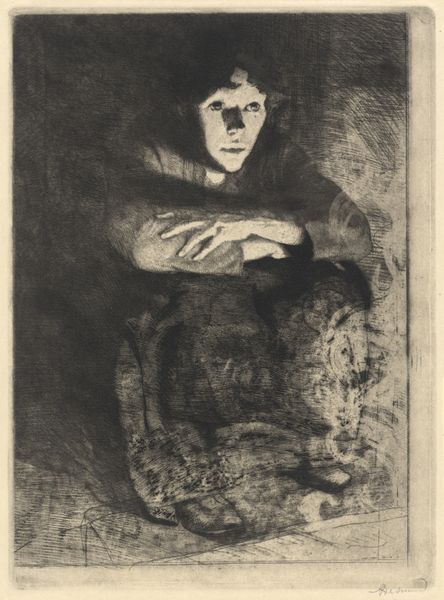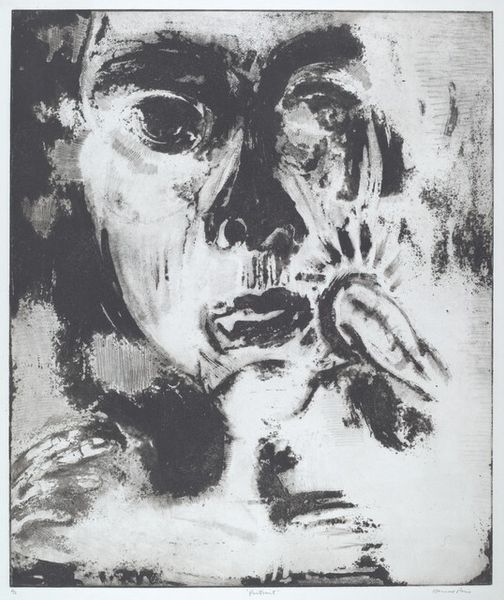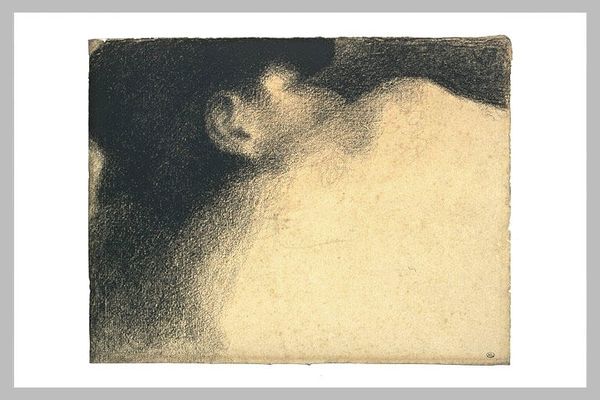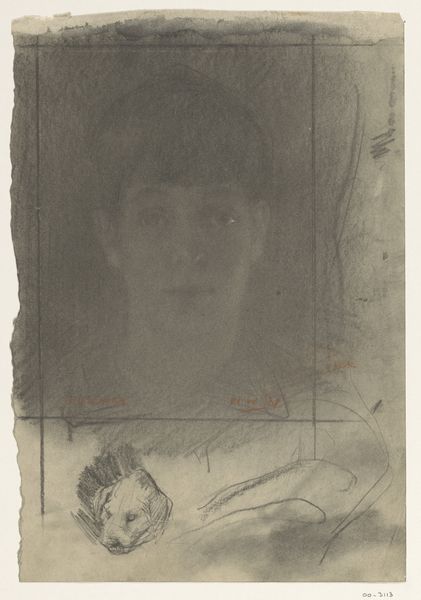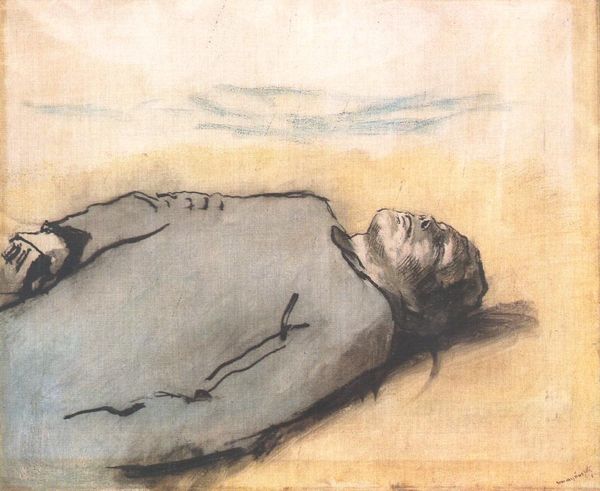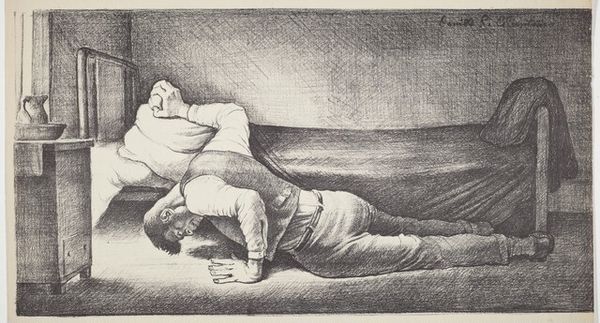
Anthony: What Is the Point of All This? The Devil: There Is No Point! (plate 18) 1896
0:00
0:00
odilonredon
Museum of Modern Art (MoMA), New York City, NY, US
drawing, pencil
#
portrait
#
drawing
#
narrative-art
#
pencil sketch
#
pencil drawing
#
pencil
#
symbolism
#
portrait drawing
#
history-painting
#
monochrome
Dimensions: 31.1 x 25.1 cm
Copyright: Public domain
Editor: This is Odilon Redon’s pencil drawing from 1896, “Anthony: What Is the Point of All This? The Devil: There Is No Point! (plate 18),” housed at MoMA. I'm struck by how stark and despairing it feels, like a glimpse into a philosophical crisis rendered in monochrome. What strikes you when you look at this work? Curator: I see a powerful statement about the futility of labor within a spiritual vacuum. Consider the materials: pencil, paper. Humble, readily available. Redon's choice to depict such profound existential questioning with these common materials suggests that this crisis is universally accessible, a product of our material conditions. Editor: Universally accessible… that's interesting. The technique feels almost dreamlike though, not really “labor” in the typical sense. Curator: But isn’t the *making* itself labor? The very act of applying pencil to paper, the pressure, the time spent… Redon's hand, guided by his intellectual and emotional state, creates this image. We must consider his societal position, his access to materials and training. How does that labor translate into this final product? Does the method affect your viewing of the portrait? Editor: That's a compelling way to look at it – as a document of Redon’s own labor. So the image isn’t just *of* despair, but *made by* despair, in a way? Considering the process, the monochrome becomes even more bleak. It reinforces a feeling of material limitations and constrained choices that, maybe, are connected to Redon's life choices too. Curator: Exactly. And let’s remember the social context. This was made in a period of intense industrial and social change, marked by alienation and a loss of traditional values. Isn’t it an excellent material representation of intellectual disquiet and perhaps a critique of the emerging capitalist drive to nowhere? Editor: That definitely puts a different spin on it. Thank you! I hadn’t considered the making of it as a labor or of the portrait sitting in a historic situation, a microcosm of its period. Curator: Paying attention to that production reveals a far deeper dimension to the work, challenging us to look beyond just the surface representation.
Comments
No comments
Be the first to comment and join the conversation on the ultimate creative platform.
